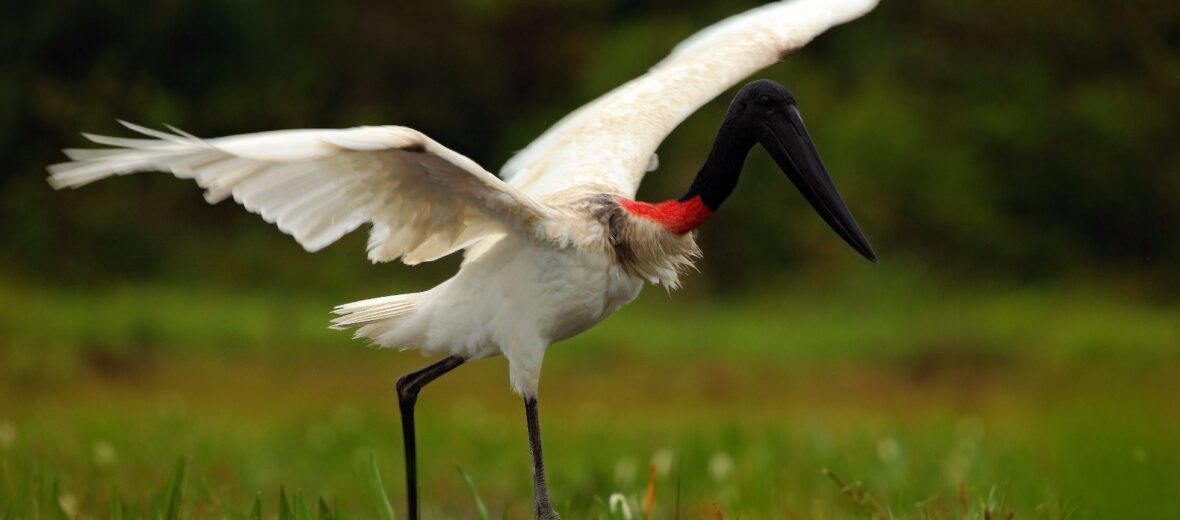
The jabiru is the tallest flying bird in Central and South America. This large stork is mainly found in Central and South America but has been reported to be as far north as Texas and even Oklahoma. An odd name, yes. But it simply means “swollen neck” in the Tupi-Guarani language. We’ll learn more about their neck in a minute. These birds are listed as Least Concern by the IUCN.
First the Stats…
Scientific name: Jabiru mycteria
Weight: Up to 9 lbs.
Height: Up to 55 inches
Wingspan: Up to 9 feet
Lifespan: Up to 36 years
Now on to the Facts!
1.) They feed on fish, insects, frogs, snakes, young caimans, crabs, and turtles.
2.) Jabirus primarily make a guttural grunt sound. However, they will also snap their bills and clack it.
3.) These large birds move about in shallow water, splashing with their bill to flush out prey, which they then locate using sight and/or touch.
4.) Their swollen neck pouch, similar to a gular pouch in a pelican, serves the same purpose as a pelican’s pouch. It helps to gather food to then be swallowed whole.
5.) During the dry season, flocks of these storks will congregate in diminishing pools to herd fish into the shallower water for easy pickings.
But wait, there’s more on the jabiru!
6.) They will scoop up water and fish, filter out the water, then gulp the fish down.
7.) Adult Jabirus do not have any known natural predators!
Did you know…?
They build a huge nest in the crown of a tree that they use each year, slowly increasing it’s size. Some nests have been recorded at over 6 feet across!
8.) Other large South American storks have black in the wings, but the jabiru is totally white, sans their black head and neck, with the red neck pouch.
Now a Short Jabiru Video!
Also, check out the Critter Science YouTube channel. Videos added frequently!
Want to suggest a critter for me to write about? Let me know here.



